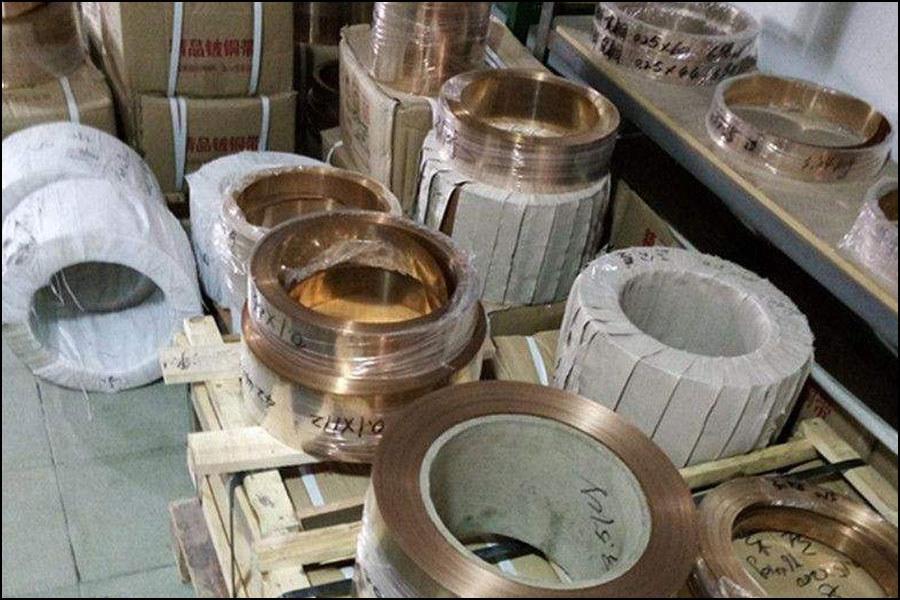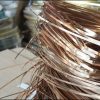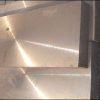
Chinese beryllium copper is a kind of bronze with beryllium as the main additive element. The performance of beryllium copper in China has also been continuously developed in recent years, and beryllium bronze with good corrosion resistance, thermal conductivity and electrical conductivity is a typical aging precipitation strengthening alloy.
The typical heat treatment process of high-strength beryllium bronze is to keep it at a temperature of 760~830℃ for an appropriate time (at least 60min per 25mm thick plate), so that the solute atom beryllium is fully dissolved in the copper matrix to form the α phase of the face-centered cubic lattice Supersaturated solid solution. Afterwards, keep it at 320~340℃ for 2~3h to complete the precipitation and precipitation process to form γ′ phase (CuBe2 metastable phase). This phase is coherent with the matrix to create a stress field and strengthen the matrix. The typical heat treatment process of high-conductivity beryllium bronze is to keep it at a high temperature of 900~950℃ for a period of time to complete the solid solution process, followed by keeping it at 450~480℃ for 2~4h to realize the precipitation process. Since more cobalt or nickel is added to the alloy, the dispersion strengthened particles are mostly intermetallic compounds formed by cobalt or nickel and beryllium. In order to further improve the strength of the alloy, a certain degree of cold working is often performed on the alloy after solution heat treatment and before aging heat treatment, in order to achieve the comprehensive strengthening effect of cold work hardening and age hardening. The degree of cold working generally does not exceed 37%. Solution heat treatment should generally be carried out by the alloy manufacturer. The user punches the solution heat-treated and cold-rolled strip into parts, and then self-aging heat treatment to obtain high-strength spring elements.
In recent years, Japan has developed strips with aging heat treatment completed by beryllium copper manufacturers, and customers can directly punch them into parts for use. After beryllium bronze has been processed by various processes, the Japanese letters for the state of the alloy are: A means solution annealed state (annealed), the alloy is in a softer state and is easy to be stamped and formed, and it is waiting for the next cold working or direct aging strengthening treatment . H stands for work hardening (hard). Taking cold-rolled plates as an example, 37% of cold work is fully hard (H), 21% of cold work is semi-hard (1/2H), and 11% of cold work is 1/4 hard state (1/4H), the user can choose the appropriate soft and hard state according to the difficulty of the shape of the part to be punched. T represents the heat treatment state that has been aging strengthened. If adopting the comprehensive strengthening process of deformation and aging, its state is represented by HT.






